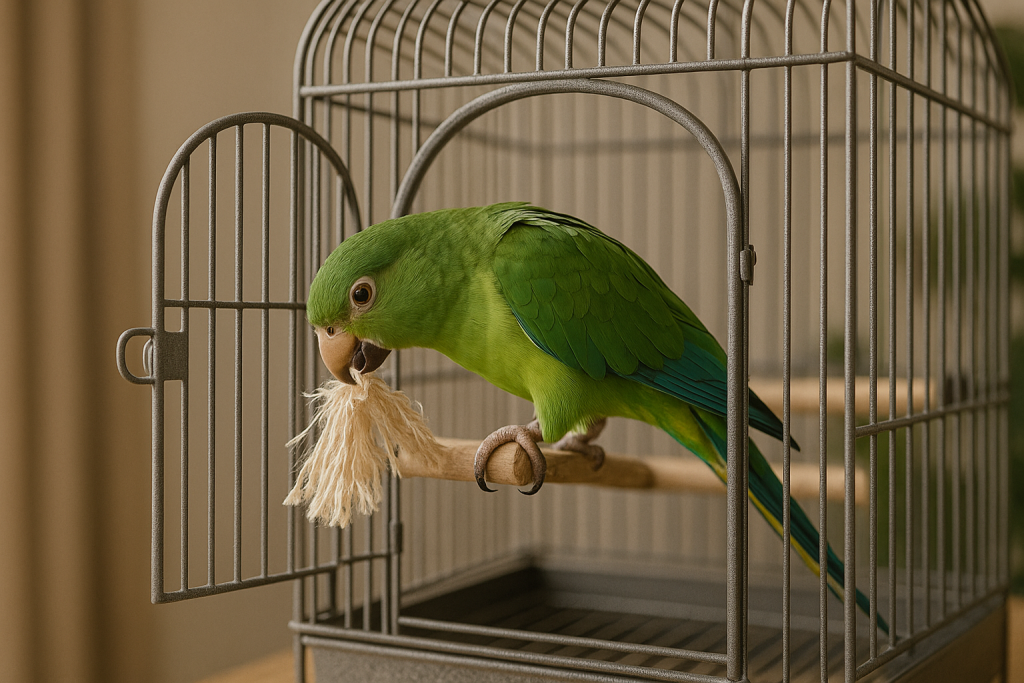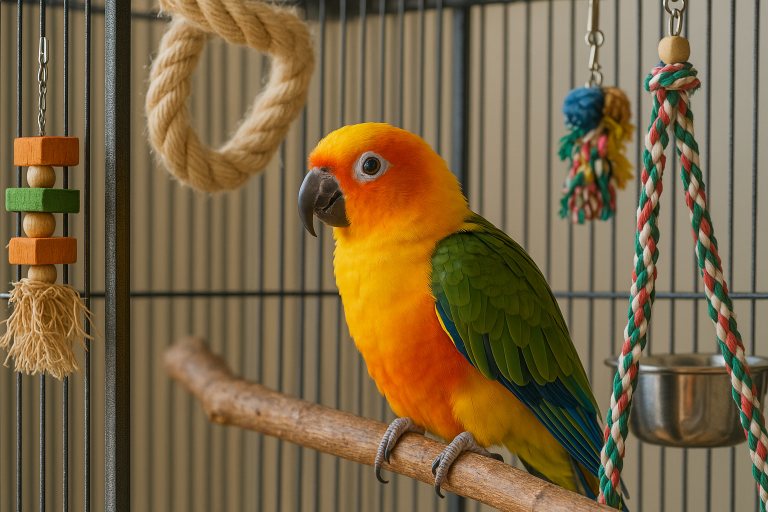A parrot’s cage isn’t just a place to sleep—it’s their home, playground, and sanctuary. A poorly designed cage can lead to stress, boredom, and even health problems. But when done right, it becomes a secure, enriching space where your bird thrives.
In this guide, we’ll cover everything from cage size and bar spacing to perch selection, toy placement, and safety hazards—plus pro tips to make your parrot love their cage (instead of treating it like a prison).
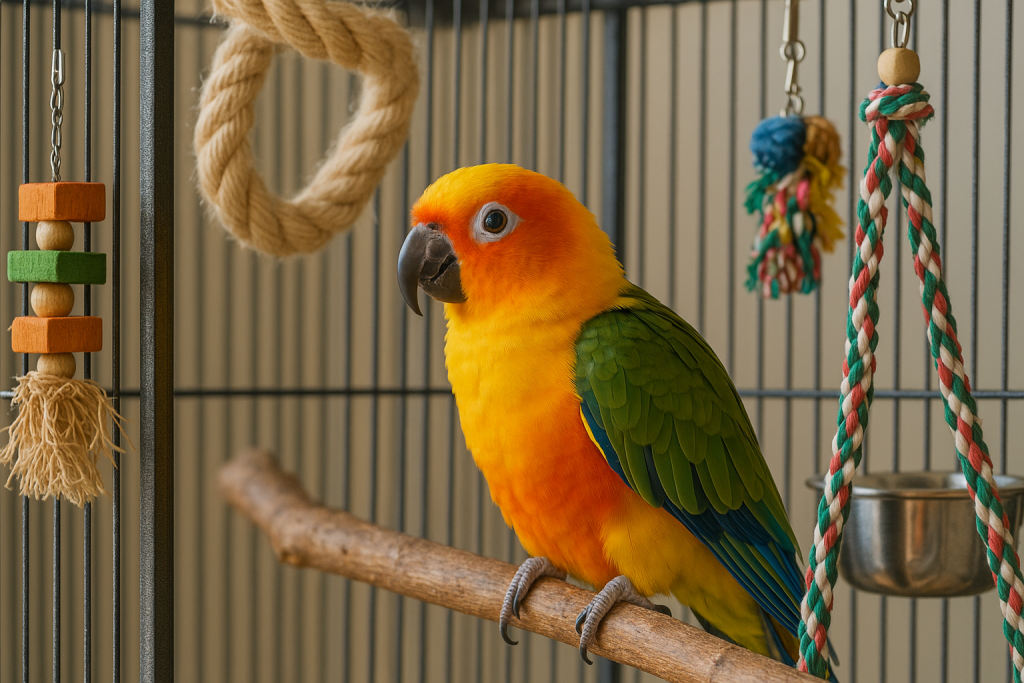
1. Choosing the Right Cage: Size, Shape & Bar Spacing
Bigger is Always Better
In the wild, parrots fly miles every day. Even in captivity, they need space to stretch, climb, and play.
- Minimum cage size guidelines:
- Small parrots (Budgies, Cockatiels, Lovebirds): 24″L x 18″W x 24″H
- Medium parrots (Conures, Quakers, Caiques): 36″L x 24″W x 36″H
- Large parrots (African Greys, Amazons, Macaws): 48″L x 36″W x 60″H
Note: These are minimums—go bigger if possible.
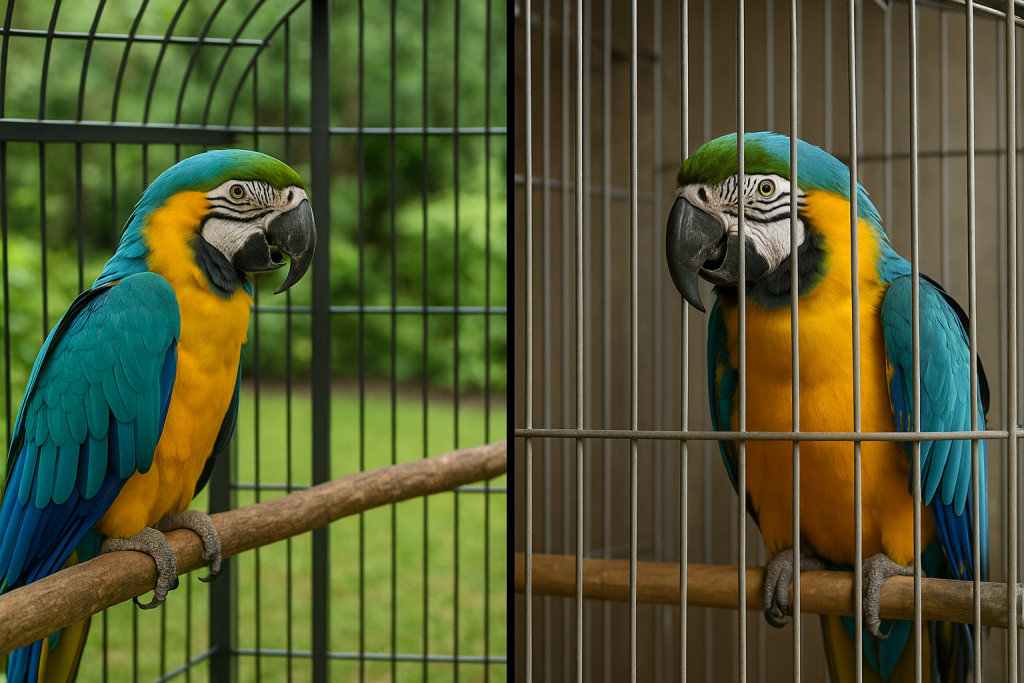
Bar Spacing Matters
Too wide, and your bird could get stuck or escape. Too narrow, and they can’t climb properly.
- Small birds (Budgies, Finches): ½” spacing
- Medium birds (Conures, Senegals): ¾” spacing
- Large birds (Macaws, Cockatoos): 1″–1.5″ spacing
Avoid Round Cages
They may look cute, but round cages disorient birds (no corners to retreat to) and limit usable space. Rectangular or square cages are best.
2. Cage Placement: Where Should It Go?
The Ideal Spot:
✅ A social area (like the living room) so your parrot feels part of the flock.
✅ Near a wall (for security) but with a view.
✅ Away from direct sunlight & drafts (no AC vents or open windows).
Places to Avoid:
❌ The kitchen (Teflon fumes from non-stick pans can kill birds).
❌ A dark, isolated room (leads to loneliness and screaming).
❌ Floor level (predatory pets or small children may stress the bird).

3. Essential Cage Accessories (Beyond Just Food & Water)
Perches: Variety is Key
- Natural wood branches (manzanita, dragonwood) help prevent foot sores.
- Concrete or sandy perches (for nail filing—but don’t make them the only perch).
- Avoid dowel perches (same diameter = arthritis risk).
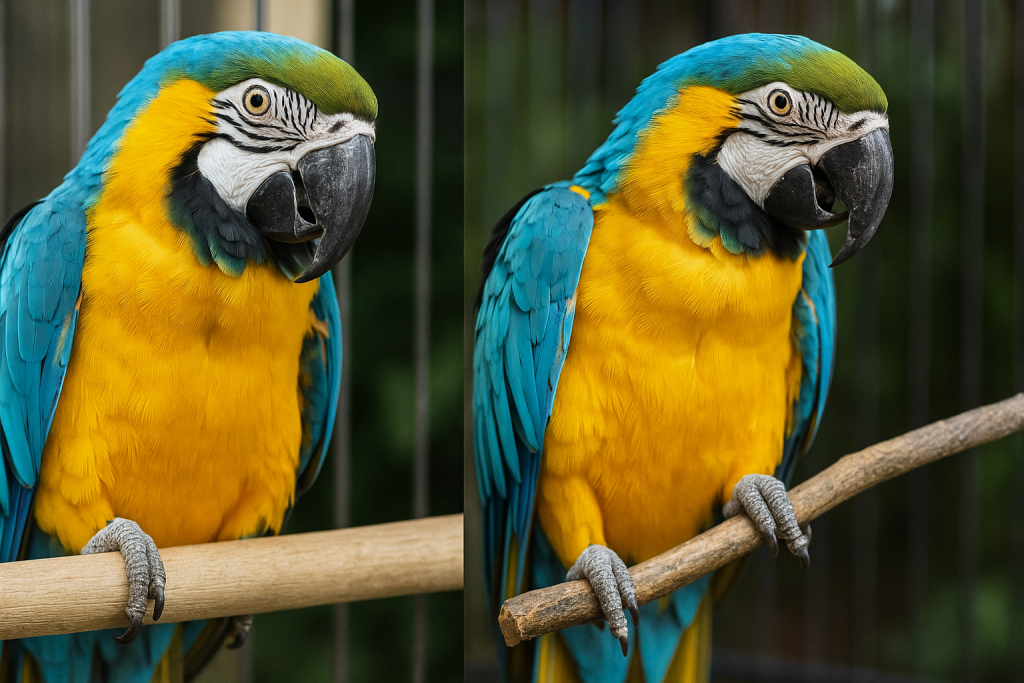
Toys: The More, The Better
Parrots are smart, destructive, and easily bored. Rotate toys weekly to prevent frustration.
- Foragers (puzzle toys, treat balls)
- Shredders (cardboard, palm leaves)
- Chewers (wood blocks, leather strips)
Pro Tip: Avoid mirrors (can cause hormonal behavior in some birds).
Food & Water Stations
- Stainless steel bowls (plastic harbors bacteria).
- Place them away from perches (to prevent droppings from contaminating food).
- Consider a water bottle (for messy drinkers).
4. Safety Hazards to Avoid
Toxic Materials
🚫 Zinc & lead (found in some cheap toys & cage coatings).
🚫 Non-stick pans (Teflon fumes are deadly).
🚫 Essential oils & candles (birds have sensitive respiratory systems).
Dangerous Cage Features
🚫 Sharp edges or broken wires (inspect regularly).
🚫 Loose toy parts (small beads or chains can be swallowed).
🚫 Sandpaper perches (cause foot sores).
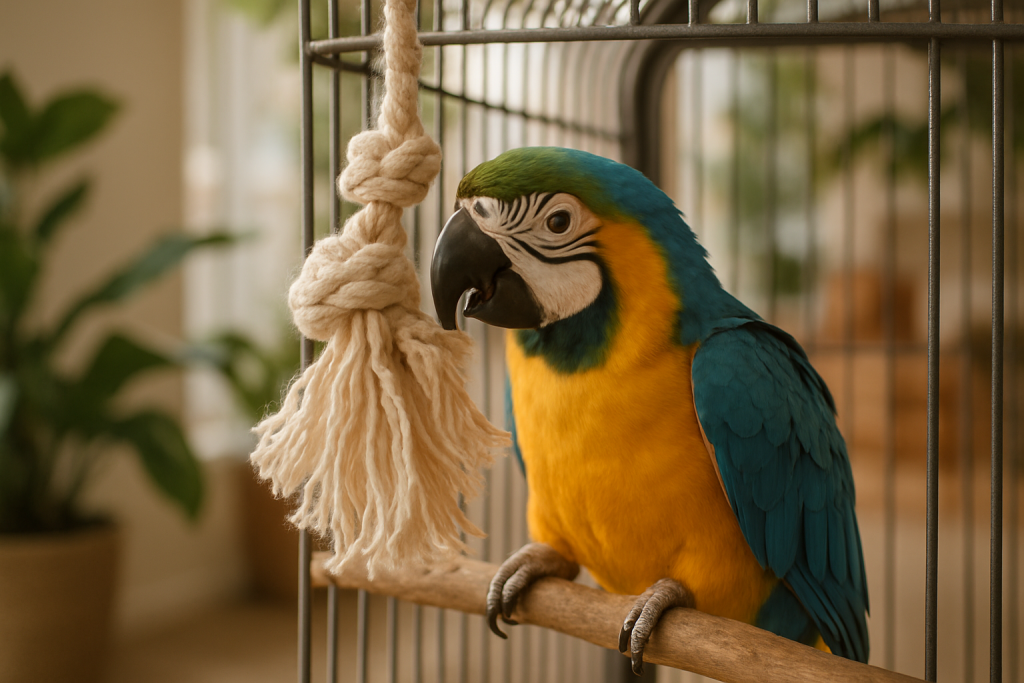
5. Cleaning & Maintenance: A Dirty Cage = A Sick Bird
Daily Tasks:
✔ Replace food/water.
✔ Remove droppings & food debris.
Weekly Tasks:
✔ Scrub perches & toys with bird-safe cleaner.
✔ Wash cage tray with vinegar & water.
Monthly Tasks:
✔ Deep-clean the entire cage.
✔ Inspect for rust or damage.
Final Tip: Make the Cage a Happy Place
If your parrot hates their cage, they’ll scream or pluck feathers. Encourage positive associations:
- Feed treats inside.
- Play games near the cage.
- Never use it as punishment.
With the right setup, your parrot will see their cage as a safe, fun home—not a prison.
